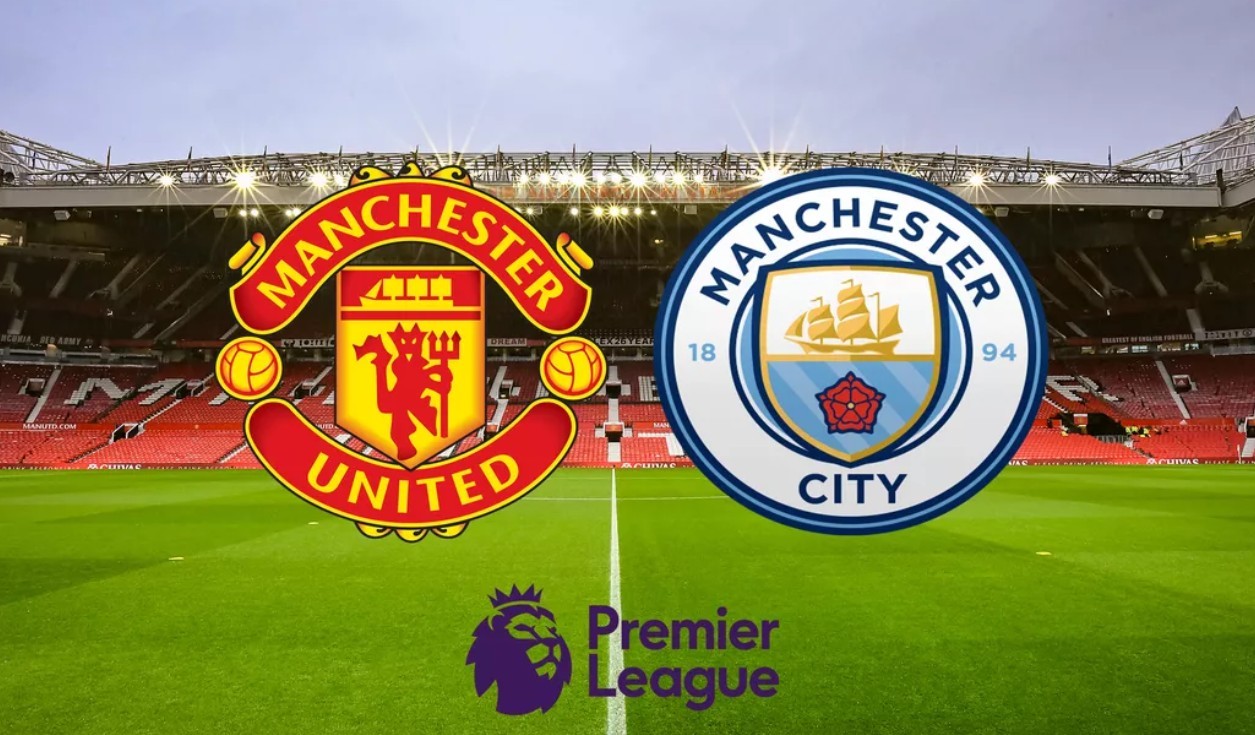Little-Known Facts About Guyana - World's Fastest-Growing Economy
| Table of Contents |
The Fastest-Growing Economies in the World Based on Oil
Situated on South America's northeastern coast, Guyana is becoming a major economic force. As per the International Monetary Fund (IMF), the real GDP of this 800,000-person nation is anticipated to have increased by approximately 38.4% in 2023.
The IMF predicted in September 2023 that between 2024 and 2028, the Guyanese economy would experience medium-term real GDP growth of 20% annually on average. That comes after 2022 growth of over 60%.
In the meantime, three years ago, less than 100,000 barrels of oil were produced per day; by early this year, that figure had skyrocketed to nearly 400,000. Additionally, some projections place daily output at 1.2 million barrels by 2027. The economy is expanding more quickly than it has in the past, but this growth will not be sustained by the oil-driven economy.
After gaining independence, Guyana was forced to continue its traditional colonial economic reliance on mined and agricultural goods, chiefly sugarcane and bauxite, for a number of decades. A socialist-leaning government passed economic reforms, but they had little impact on the economic cycle.
Government control was lowered and a privatization program was implemented starting in the 1990s. The government had obtained foreign direct investment in the mining, forestry, agriculture, and petroleum industries by the early 21st century. But Guyana's problems with a lack of trained labor, a shaky infrastructure, and a high level of external debt persisted.
The primary agricultural products that are exported to most countries are rice, sugar cane, and lumber.
The USA, Canada, Portugal, and Trinidad and Tobago are the nation's top trading partners.
Read more: Miracle or Flash: Top 10+ Fastest Growing Economies 2024 in the World
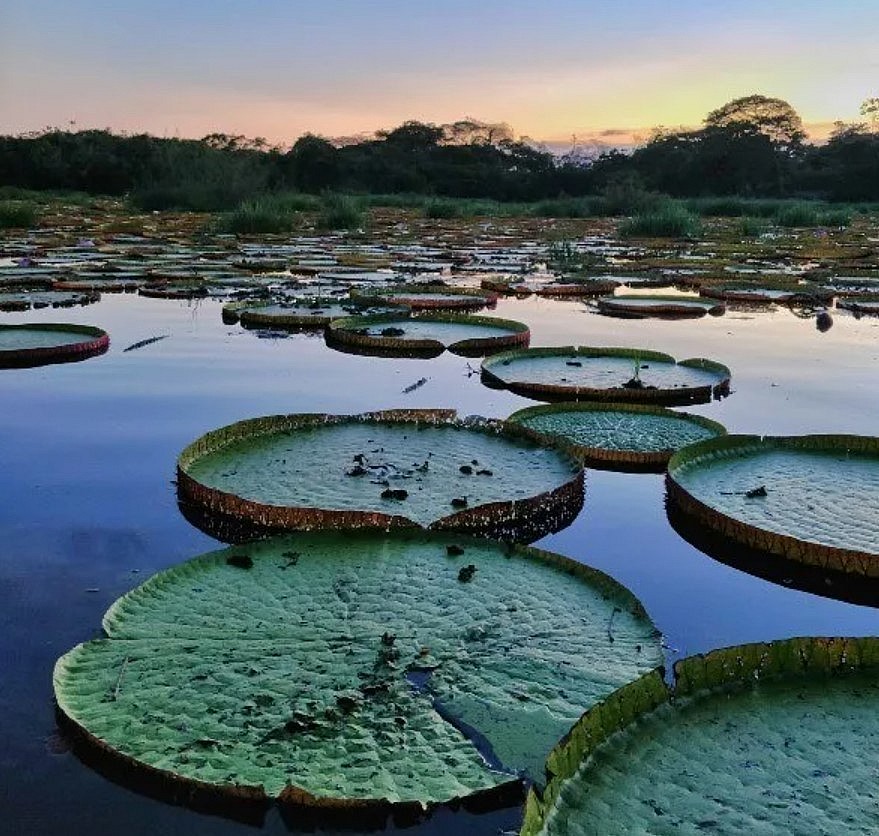 |
| Interesting Facts About Guyana: The flowers of the giant waterlily transform as the evening draws close. |
Guyana: Quick Facts
Total Area (Sq Km): 214,999
Population: About 800,000 people live in Guyana (2024)
Population Projection 2030: About 813,000
Capital: Georgetown with 200,000 inhabitants
Name: Guyana, formerly British Guiana
Government: Parliamentary Republic
Official Language: English
Time zone: UTC-4 (Atlantic Time Zone)
Literacy: More than 88% of the people can read and write.
Religion: mainly Christian (63%) Hindu (25%) and Muslim (7%)
Currency: Guyanese dollar
National Symbols: Waterlily (national flower), jaguar (national animal)
Motto: "One people, one nation, one destiny"
National Holiday: 23 February (Republic Day)
National Anthem: "Dear Land of Guyana, of Rivers, of Plains"
• The national holidays of Guyana include Catholic, Muslim, and Hindu holidays.
• Nearly 85% of Guyana is covered in forest and 75% of the country is covered in rainforest.
• The land area of Guyana is slightly smaller than that of Idaho.
• Guyana was originally inhabited by semi-nomadic Amerindian tribes – notably Arawaks and Caribs – who were mainly hunters and fishers.
• Guyana was first sighted by Europeans in 1498 by Christopher Columbus.
• Guyana changed hands several times between the European colonial powers of France, the Netherlands, and Britain over the ensuing centuries. Guyana was formally a British colony from 1831 until 1966, when it attained complete independence.
• In 1620 the Dutch first began importing slaves into Guyana from the west coast of Africa to work on its sugar plantations.
• The "Golden Arrowhead" is the name of the flag of Guyana. The five colors stand for various characteristics: white represents the nation's numerous rivers; red denotes zeal and sacrifice in the process of nation-building; black represents tenacity; and green represents the country's vast expanse of fields and jungles.
• After the abolition of slavery in 1834, Indian, Portuguese, Chinese and Javanese indentured labourers were brought into Guyana to work on the plantations.
• Guyana is known as the ‘land of six peoples’
• During the 18th and 19th centuries, Scotland played a significant role in the slave trade, especially in Guayana. At least thirty place names that are connected to the Scottish Highlands are located south of Georgetown, the capital of Guyana. Belladrum, Alness, Culcairn, Dunrobin, Glastullich, Inverness, Kintail, Kintyre, Rosehall, and Tain are a few of these.
The highest single-drop waterfall in the world is Kaieteur Falls, located in Guyana. The falls are between 76 and 122 meters wide, depending on the season, and they tumble over a 250-meter cliff.
• In fact, Guyana means ‘land of many waters’ as it has at least 300 waterfalls and multiple rivers. Other famous falls include the Orinduik Falls and Marshall Falls.
• In 1978, 918 people committed mass suicide in Guyana – after following cult leader Jim Jones to the country – in what became known as the Jonestown Massacre.
• Guyana is South America’s second-poorest country after Bolivia.
• That said, Guyana is bracing itself for an oil boom after the discovery of more than 5.5 billion barrels’ worth of oil in 2019. The oil is located beneath the country’s waters in the Atlantic Ocean.
• Guyana is the only English-speaking country in South America.
• The Guiana Shield, a large area of northeastern South America, includes the Guyanese jungles. It is not connected to the Amazon and is a hotspot for biodiversity with over a thousand bird species and at least 269 amphibian species.
• Demerara sugar takes its name from the original Dutch colony of Demerara in Guyana. The Demerara River still flows through the region.
• Numerous endangered species can be found in Guyana, such as blue tarantulas that were only found in 2017 and vibrant frogs and jaguars. As a matter of fact, scientists found over thirty new species that year.
• The most popular sport in Guyana is cricket. The country plays international cricket as a part of the West Indies cricket team and has produced several notable players.
• El Dorado was never found, but Guyana does have a lot of gold. In 2017 Guyana exported $848 million worth of gold, accounting for 41% of its exports.
• Guyana is one of 27 countries that doesn’t have a single UNESCO World Heritage Site.
• The longest river is the Essequibo which is 1,010 km / 628 miles long.
• The highest mountain in Guyana is Mount Roraima with a hight of 2,772 m/ 9,094 ft. Mount Roraima is located at the border with Brazil and Venezuela.
 |
| Guyana’s flag is called the ‘Golden Arrowhead |
| EMERGENCY NUMBERS Police: 911, 564, 225-6411 Police: Emergency Response Unit: 225-6411(24hrs), 226-4585 Impact: 225-2317, 227-4064-5 CID Headquarters: 225-3650, 225-8196, 226-6978 Police Headquarters: 226-2487, 226-2488, 227-4656 Traffic Headquarters: 227-2272, 226-9431, 227-2349 Operations Brickdam: 227-1270, 227-1149 Fire: 912, 226-2411-13 Ambulance: 913 TIME ZONE GMT – 04:00 |
Guyana Geography, Location
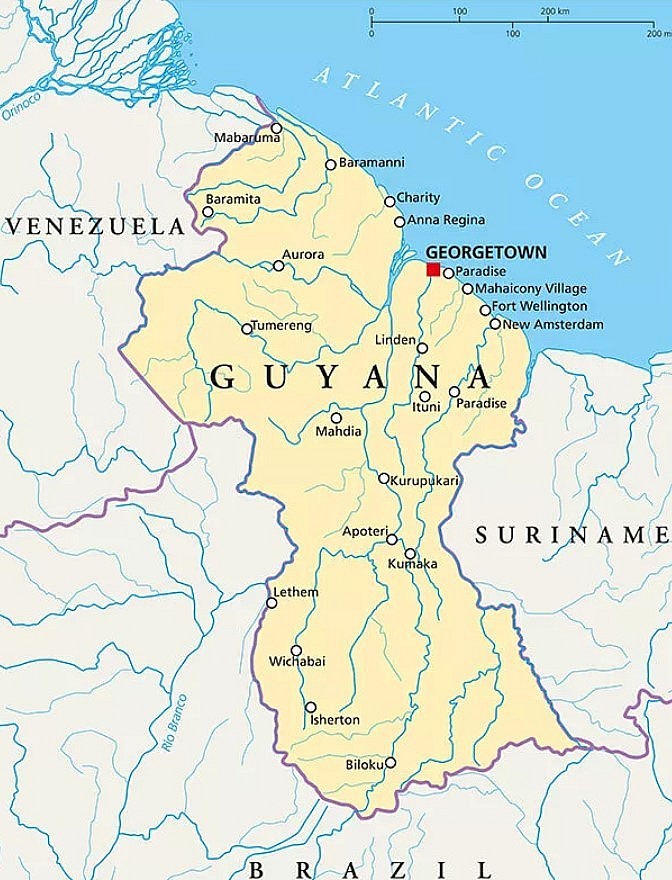 |
| Map of Guyana |
Where is Guyana?
On the continent of South America, Guyana borders the North Atlantic Ocean.
One of the four South American nations entirely situated in the Northern Hemisphere is Guyana. The name of the capital city is Georgetown.
On the map of Guyana, you can see its three neighbors: Brazil is located in the south, Venezuela is to the west, and Suriname is to the east.
Guyana is roughly twice as big as Tennessee, in the United States, and about the same size as Great Britain, the largest island in the United Kingdom.
From London, United Kingdom, it takes approximately 11 hours to reach Guyana, and from New York, United States, it takes roughly 14 hours to reach Georgetown's Cheddi Jagan International Airport.
With more than 75% of its land area covered in forests, Guyana is one of the most biodiverse nations in the world.
In the north, west, and south, dense rainforests predominate over the surrounding terrain. The majority of the population lives on coastal plains along the coastline, but there are also some desert and savanna regions in the far western regions.
| The name of the nation comes from an Amerindian word that means "Land of Many Waters," which is appropriate given that Guyana is home to numerous rivers, the longest and widest of which is the Essequibo. |
Government and Society in Guyana
The current constitution of Guyana was adopted on October 6, 1980. The unicameral National Assembly, which has three nonelected members in addition to the speaker, and 65 elected members chosen for a five-year term by universal adult suffrage, makes up the legislative branch of the government. Under a system of proportional representation, national party lists elect forty members of the Assembly; the remaining twenty-five members are chosen by the nation's administrative regions. The president, who is the nominee of the party whose slate has garnered the most votes, has executive authority. The National Assembly is the body to whom the president appoints members of the cabinet.
The Regional Democratic Councils, which are elected for terms of up to five years and four months in each of the ten regions of the nation, serve as the main administrative body for local government. Each council is headed by a chairman. Village or city councils are in charge of overseeing local communities.
Guyana History
Indigenous peoples inhabited Guyana for a considerable amount of time prior to the arrival of Dutch and British colonies in the 16th century.
The first colonies were founded in 1581 by the Dutch; they were turned over to the British in 1814, when the colony was renamed British Guiana.
British airfields in South America, including those in British Guiana, were made available for use by American air forces during World War II[citation needed].
This territory became an autonomous region in 1953. The nation was governed by Prime Minister Cheddi Jagan (1961–1964), who was of Indian descent. Jagan was up against the United Forces' White soldiers as well as the 35% Black opposition group under the leadership of Forbes Burnham.
Guyana remained a Commonwealth member after gaining independence from Great Britain in 1966 and turning into a republic in 1970. The political leaders in charge of Guyana at the time were greatly influenced by the British government, the US State Department, and the CIA.
Mohamed Irfaan Ali has been the president since 2020. He is the nation's first Muslim to hold this position.
People in Guyana
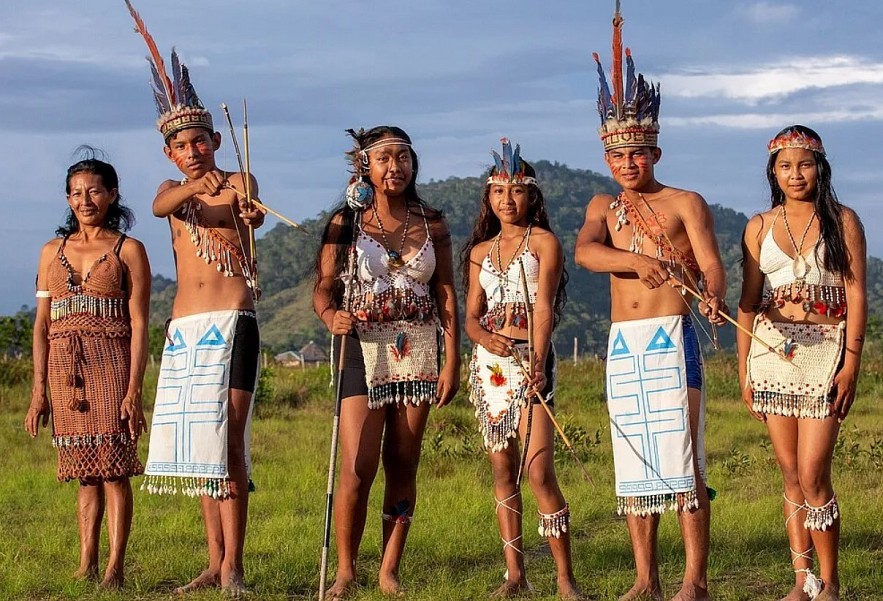 |
| Guyana’s Indigenous peoples |
| Guyana’s demographic profile is highly diverse: Indo-Guyanese (descendants of Indian indentured labourers): 39.8%, Afro-Guyanese (descendants of African slaves): 29.3% Mixed race: 19.9%, Amerindian: 10.5% Other (including Portuguese, Chinese, white): 0.5% |
The majority of Guyanese people reside in and around Georgetown, the nation's capital, and the Atlantic coast.
The Indo-Guyanese and Afro-Guyanese populations in Guyana are the largest ethnic groups. Guyanese people have family ties and ancestors in numerous nations. There are:
Indians: their ancestors came from northern India
Africans: their ancestors came from Africa
Creole, means mixed white and black
Amerindians
Europeans
Muslims comprise less than one tenth of the Guyanese population, with Christians making up about half of the population and Hindus making up 25%.
Folk religions are practiced as well, frequently in conjunction with the major religions. The Christian holidays of Christmas and Easter, the Hindu festival of Holi, and the vibrant national holiday known as "Mash" or "Mashramani," which commemorates the anniversary of Guyana's independence, are among the most widely observed occasions.
The primary languages spoken by the people are English and Guyanese Creole, a mixture of words from both English and several Indian and African languages. Few people speak indigenous languages like Wai Wai, Macushi, or Akawaio these days.
The three most popular sports are basketball, soccer, and cricket. The Rupununi Music and Arts Festival, an outdoor camping and music event that typically takes place every March/April over the Easter weekend, is just as popular as the Guyana rodeo each year.
| Similar to the Indo-Guyanese, a large number of Chinese and Portuguese immigrants to Guyana were once employed as agricultural laborers; however, these individuals are now mainly concentrated in the cities. They have not been growing, though, and collectively they make up a very small portion of the population. They are involved in business and the professions, and their influence is out of proportion to their numbers. Brazilians are a minority group that is small but expanding. |
Foods in Guyana
The diverse cooking techniques of the African, Indian, and Amerindian immigrants have a great influence on Guyanese food. Guyanan cuisine typically consists of rice, cassava, leafy greens, meats, and seafood, such as crabs and shrimp.
Typical Guyanese food and drinks include:
Pepperpot: stew made with pork, lamb or beef cubes and most commonly eaten at Christmas. The stew is spiced with peppers, cinnamon and eaten with rice or bread.
Metemgee: a plantains and cassava stew that includes salted fish or meat in a coconut milk
Egg balls: hard-boiled eggs that are coated with spicy cassava dough, rolled in flour and deep fried
Cassava bread: flat bread made with shredded cassava roots, flattened in a pan or cooked on banana leaf
Plantain chips: fried plantain slices are a popular street food
Languages and Religion in Guyana
Although English is the primary language and official language, there is a native creole language spoken all over the nation.Older Indo-Guyanese speak Hindi and Urdu on occasion. The two main faiths are Hindu and Christian, primarily Roman Catholic and Anglican. Protestant Christianity in its various forms gained ground in the twentieth century, primarily in Georgetown. A sizeable minority of Muslims also exist, the majority of whom are South Asian in origin. Some Indian peoples continue to follow their indigenous religions.
Education in Guyana
Nearly everyone in Guyana is literate. Up until the age of 15, education is required. Although some secondary classes must be held in primary schools due to a lack of facilities, primary and secondary instruction are separate. The government took over complete control of education in 1976, covering kindergarten through university levels.
Then, government control was extended to private elementary schools and churches. The main university is the University of Guyana, which was established in 1963 and is now located in Turkeyen, which is in the eastern region of Greater Georgetown.
Additionally, the university has become politicized, with enrollment only guaranteed after a year of national service—typically at camps in the interior of Guyana. As a result, many Guyanese look for training and education overseas. Other colleges exist, such as technical and teacher-training institutes.
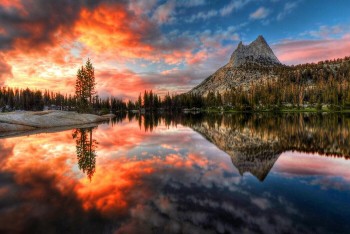 Top 10 Most Deadly Natural Wonders In The World Top 10 Most Deadly Natural Wonders In The World Natural wonders are not always wonderful. Be careful when visiting those nature wonders as they record high number of deaths annually due to risky landscapes. |
Transportation in Guyana
Part of the limited road and highway system is composed of burned clay, and part of it is paved. The majority of the coastal zone has paved roads, and the entire coastal region is connected by a highway. Historically, there weren't many roads in the interior, but in the early 21st century, more roads and bridges were built there, improving access between towns and villages.
The coastal railway of Guyana, which began passenger service in the 1970s, was the first rail line in South America, having been founded in 1848. A freight line that is still in use carries bauxite from Ituni to Linden, while another links the manganese mines at Matthews Ridge with Port Kaituma on the Kaituma River. Minibuses that are privately owned are crucial for moving people and cargo into and out of Georgetown.
About 25 miles (40 km) from Georgetown is the nation's main airport, which is served by numerous international airlines. Landing strips and the more peaceful sections of rivers are used by domestic commercial and private aircraft.
Through the canals of the coastal estates and villages, barges and small boats transport people and agricultural products. Bigger vessels navigate the estuaries that cut through the coastal plain. In 1978, a pontoon bridge that spans the Demerara River and connects the main parts of the coastal plain opened. 2008 saw the opening of the Berbice River Bridge, which links Guyana and Venezuela. In 2009, a bridge that spans the Takutu River and links Guyana and Brazil opened. The country's external trade passes through Georgetown, which maintains connections with the West Indies, Suriname, French Guiana, the United Kingdom, Canada, and the United States. Bauxite is loaded into oceangoing ships at Linden, and manganese ore at Port Kaituma.
Sports and Recreation in Guyana
Like much of the English-speaking Caribbean, the Guyanese are passionate about cricket. In addition to squash, there are other sports like basketball, boxing, table tennis, and association football (soccer). Guyanese athletes competed in their first Olympics, representing British Guiana in the 1948 London Games. When Guyana gained its independence in 1968, it took part in the Mexico City Olympics.
Numerous outdoor pursuits, such as fishing and hunting, are made possible by the nation's lush landscape and profusion of wildlife. At Lethem, birdwatching is especially well-liked. Enjoyed activities include hiking and rafting, and swimming in freshwater creeks is quite common, especially in the savanna areas. Holiday celebrations associated with Christianity, Islam, and Hinduism serve as the foundation for a lot of recreational activities.
Media and Publishing in Guyana
In Guyana, press freedom is still in its infancy. Up until 2001, the government owned the Guyana Chronicle, the only daily newspaper, radio, and almost all local news outlets. Other print media include the independent publications Stabroek News and Kaieteur News, the PPP's Mirror, and the PNC's New Nation. The first television station in Guyana was launched in 1988 and operated by the government. By 2001, a few private stations carried American programming, and over a dozen television stations were running under government license.
Top 5 Tourist Attractions in Guyana
1.Kaieteur Falls
Though Iguazú Falls in Argentina may be the most well-known waterfall on the continent and Angel Falls in Venezuela may hold the title of tallest uninterrupted waterfall in the world, few tourists are aware of Kaieteur Falls, another equally stunning waterfall and landmark.
Kaieteur Falls is included on all Guyana itineraries for a reason. First of all, when it's at its fullest during the rainy season (May through July), it's the largest single drop waterfall in the world by volume.
Second, though, the setting's drama cannot be denied. Situated deep within the Guyanese interior and shielded by a dense rainforest wall, Kaiteur Falls can only be reached by air from Georgetown, the capital, in one hour or by foot over the course of two days.
It's difficult to get rid of the impression that you're in a real-life Jurassic Park as you arrive by plane, flying over the falls for the best possible bird's-eye views as the jungle stretches into the distance below.Still, most likely without the dinosaurs...
2. The Largest Lily in the World
The largest water lily in the world, the Victoria amazonica, is likely to be found in Guyana's lakes, so amateur botanists should seek out these calmer areas.
There are numerous photos to support the claim that the water lily's leaves, which can reach a diameter of six feet, can sustain a baby's weight.
Not only are these lily pads enormous, but pollination causes their white to red blooms to change color over night, which is another reason to locate one.
When the sun sets and the flowers start to open, you can witness the start of this process. Rewa Eco-Lodge is one of the best locations, with rare birds soaring above the lily-filled waters and baby caiman emerging from the water onto lily pads to await their meal.
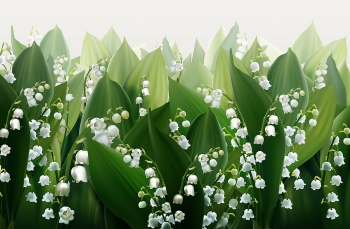 Little-Known Facts: Lily of the Valley Flower Little-Known Facts: Lily of the Valley Flower |
3. Iwokrama Canopy Walkway
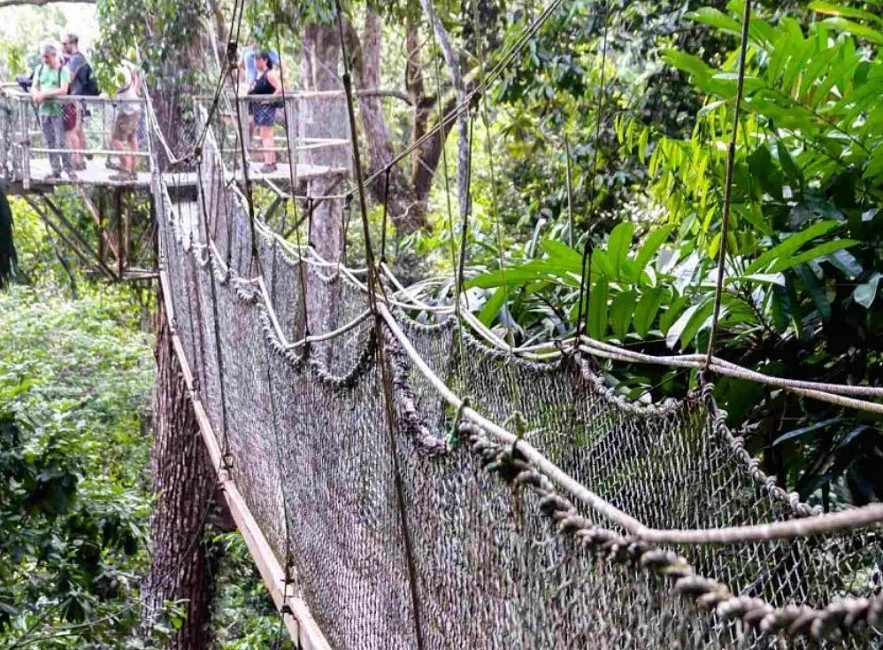 |
| Iwokrama Canopy Walkway, |
Guyana is a great place for early risers, as dawn is always a magnificent event. The Iwokrama Canopy Walkway, which is the ideal spot to witness the dawn of a new day, is only a short stroll through the jungle from the ATA Rainforest Lodge in the heart of Guyana.
Situated approximately thirty meters above the forest floor, the walkway is a network of observation platforms connected by suspension bridges, nestled into the treetops of the Iwokrama Reserve and offering some of the best views over the jungle.
The hum and buzz of life resumes as the sun rises above the canopy of the rainforest. When the howler monkeys start singing in the morning, keep an ear out for their deep, distant roar and the sharp squawk of the scarlet macaws overhead.
4. Climb a mountain for incredible rainforest views
Although long hikes aren't particularly popular in Guyana, there are still lots of opportunities to get some fresh air here.
While hiking in the rainforest in Guyana can be quite hot and humid, the rewards can be astounding, especially at Awarmie Mountain, which is reachable from the isolated Rewa Eco-Lodge.
Awarmie is a low mountain covered in jungle that can be reached by a short, rocky path that climbs its side. The trail reaches the open mountaintop when it eventually breaks free of the treetops. Here, massive boulders scattered with dense grasses allow for views of the rainforest that stretch for miles.
Your patience will be rewarded if you take an hour or so to unwind here. During our visit, pairs of red-and-green and blue-and-yellow macaws flew straight overhead, their brilliant feathers contrasting with the clear blue sky above.
5. Enjoy Sunset from the Essequibo River at Baganara Lodge
Guyana means "land of many waters" in the language of one of the many Native American tribes that still call this place home.
The country is crisscrossed by an extensive network of rivers, which are essential for traveling from the capital to the many isolated lodges that are a highlight of any visit to Guyana.
Baganara Lodge is one example. It is located on a private 185-hectare island in the Essequibo River, South America's third-largest river, and is surrounded by jungle. When it comes to places to watch the sunset in Guyana, this waterfront location is unmatched.
Take a speedboat downstream to Parrot Island as the day draws to a close. Here, thousands of orange-winged and yellow-crowned parrots gather in a heaving, squawking mass at dusk to spend the night roosting.
Alternatively, relax at the lodge and swim in the warm river waters with a cocktail in hand as the sun sets behind the jungle canopy.
FAQs About Guyana
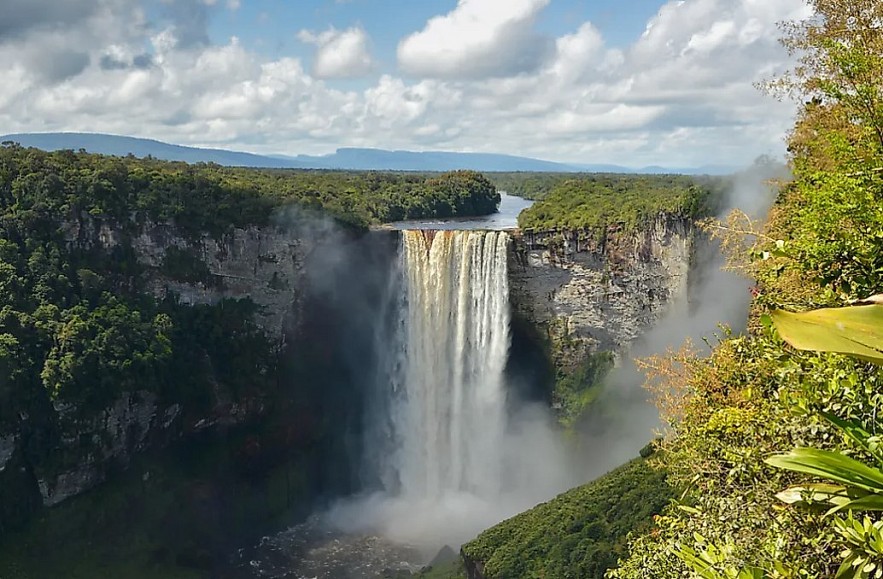 |
| The beautiful Kaieteur Falls in Guyana. |
Where is Guyana Located?
South America's northern mainland is home to the nation of Guyana. Guyana is bordered to the north by the Atlantic Ocean, to the south by Brazil, to the east by Suriname, and to the west by Venezuela.
What is the Official Language of Guyana?
Guyana is the only English-speaking nation on the continent and the only country in South America where English is the official language. There are multiple languages that are spoken, such as Hindi, Creole, and Indigenous languages.
What is the Currency of Guyana?
The currency of Guyana is the Guyanese dollar.
What is the Culture of Guyana Like?
The population of Guyana is a distinct mix of European, African, Indian, and native American descent. This leads to a stunning blend of cultures that is manifested in a variety of forms, such as entertainment, food, and architecture. Guyanese people are known for being hospitable and friendly, and they take great pleasure in showing visitors their culture and way of life. Whether you're exploring the markets in Georgetown or taking a hike through the rainforest, you'll always be met with a friendly smile and a helping hand.
What Souvenirs Should you Bring from Guyana?
Some things you can get in Guyana include bows and arrows, Amerindian hammocks, salad bowls, and pottery.
Is Guyana Safe?
Yes, traveling to Guyana is usually safe. Like any other destination, though, you should exercise common sense and take safety precautions like staying in your surroundings and not going alone at night.
What Is the Best Season to Visit Guyana?
The country's dry season, which runs from November to April, is generally the ideal time to visit Guyana. The best days are usually in December and January, and the rainy season, which lasts from May to August, is when the countryside is most verdant and lush.
What Kind of Things to Bring to Guyana?
Bring comfortable hiking shoes, insect repellent, sun protection, a reusable water bottle, and light, breathable clothing.
 Top 14 Little-Known Facts About A Rose Flower Top 14 Little-Known Facts About A Rose Flower The rose is not just the most loved flower in the world, it is also the flower that is regarded as the best representation of ... |
 Top 20+ Little-Known Facts About Brazil Top 20+ Little-Known Facts About Brazil Brazil is a charismatic place, and there are tons of reasons to visit it. If you are an independent traveler looking for the next best ... |
 Little-Known Facts: Lily of the Valley Flower Little-Known Facts: Lily of the Valley Flower Lily of the valley is a flowering plant and one of the most sought after flowers for its sweet scent and delicate bell like petals ... |




